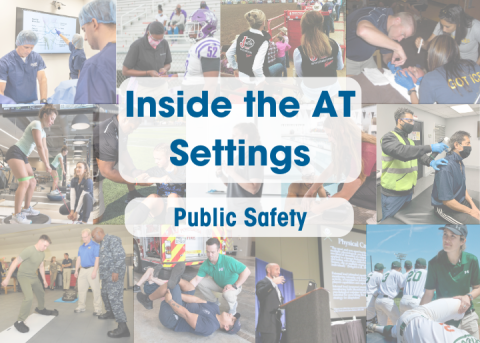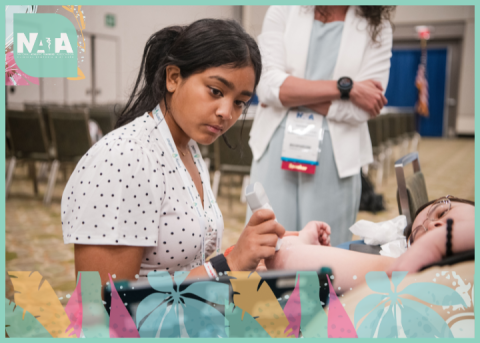
Introduced in the April NATA News, this NATA Now article series provides insight into the different athletic training settings as well as information athletic training students and interested ATs need to know. The series also provides tips from members on how to succeed in each setting.
Traci Tauferner, LAT, ATC, CSCS, an athletic trainer with Advanced Physical Therapy & Sports Medicine in Wisconsin, has been in the public safety setting for 14 years.
Tauferner said her athletic training journey started in the secondary school setting, where she established herself as an AT and strength coach for a hospital system. She was later drawn into public safety – also known as the tactical setting – after a successful and popular tactical athletic training pilot program.
“When the local fire chief sought assistance from my director for a stretching program tailored to her fire department, keying in on injury prevention, I recognized the opportunity to extend my expertise,” she said. “I eagerly stepped forward, driven by a profound desire to make a meaningful difference by proposing a comprehensive injury management approach encompassing all five athletic training domains. As the pilot program surpassed all expectations, its success rippled through the community, pulling me into the dynamic world of tactical and industrial settings. Thus, I began a new chapter in my career.”
Learn more insight on the public safety setting from Tauferner.
Typical Makeup of Your Population
My focus on tactical athletic training centers on the unique needs of individuals within law enforcement and firefighting units, from rookies just starting their careers to seasoned veterans with years of service.
Non-AT-Related Skills/Education/Certification Required or Helpful for Your Setting
In addition to athletic training-specific expertise, proficiency in several non-AT-related skills, education and certifications is essential for this setting. This includes Occupational Safety and Health Administration (OSHA) First Aid, ensuring readiness to provide immediate medical assistance in compliance with OSHA standards. Understanding workers' compensation protocols and regulations is vital for efficiently navigating injury reporting, rehabilitation and return-to-work plans. Furthermore, mental health first aid training equips me with the ability to recognize and address mental health challenges promptly.
Common Injuries Observed or Encountered in Your Setting
Common injuries often encompass a spectrum of physical and psychological challenges. Muscle strains and sprains frequently occur due to the rigorous physical demands of tactical work, with muscles used for running, lifting and grappling particularly susceptible. Traumatic injuries, such as fractures and lacerations, are a constant risk during physical confrontations or accidents encountered in the line of duty. Additionally, the toll of psychological stress and trauma can’t be overlooked. Addressing these individuals' physical and emotional well-being is paramount for their readiness.
Traits of a Successful AT in Your Setting
I work with professionals in dynamic and physically demanding environments where split-second decisions and peak physical performance are critical. Police officers and firefighters encounter various challenges, including high-stress situations, physical confrontations and exposure to hazardous conditions. I develop tailored athletic training programs that optimize their physical fitness, agility, endurance and tactical skills to support them. By implementing targeted strategies for injury prevention, rehabilitation and performance enhancement, I play a vital role in ensuring the readiness and effectiveness of tactical personnel.
Misconceptions About Your Setting and/or Patient Population
Transitioning from junior high or high school athletic training to a tactical or industrial environment requires a focus and skill set shift. While athletics emphasizes AT skill and teamwork on the field, tactical and industrial roles demand critical thinking and practical problem-solving in dynamic work environments. This transition involves mental resilience, communication skills and the ability to execute tasks efficiently and safely in high-pressure situations.





